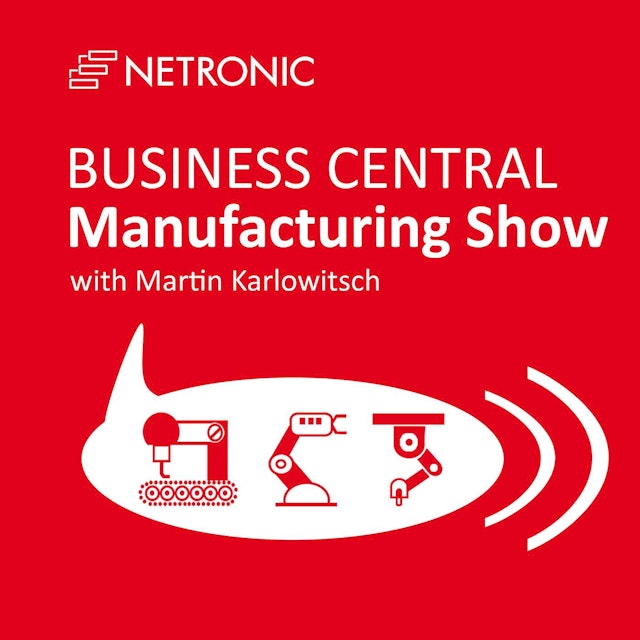In his latest podcast episode, Martin hosted Ivar Keskpaik, who, amongst a plethora of other roles and positions, works as a Business Consultant for Softera Baltic, Lithuania.
He holds an MSc in Physics, is a chartered engineer, a certified Theory of Constraints (TOC) practitioner, and has been titled the “most famous Interim Manager of Estonia” by the Magazine “Director”. Ivar and Martin discussed how manufacturing companies working with Microsoft Dynamics 365 Business Central can apply the Theory of Constraints.
Martin introduced the podcast's topic by asking Ivar to explain the Theory of Constraints (TOC) shortly. As Ivar outlined, this concept was developed by Eliyahu M. Goldratt in the late 70s of the last century and describes a management philosophy and methodology that allows one to focus only on the constraints in a process and to make good bottom-line results for a short period in any type of company. TOC is more complex than other management theories, such as Lean or Six Sigma, and Ivar admitted that it took him 20 years to grasp it fully.
As Ivar went on, the high complexity of TOC lies in its being based on a flow-based approach and not on a resource-based one. Flow-based thinking is about making sure things move smoothly and efficiently from start to finish, therefore trying to detect the constraints - or bottlenecks - in a process and maximizing them to the maximum flow. Transferring this to the typical Business Central manufacturing customers, namely SMBs, their constraints are always on resources. However typically, the bottleneck isn't stable, but it keeps on shifting from one work or machine center to another.
Once the constraint has been detected - by scrutinizing the workload of the different capacities - the planning must only be done for this resource. The workload should not be distributed equally among all resources to remove the constraint.
Talking about best practices for implementing TOC at manufacturing companies using Business Central, Ivar related that it always starts with a visit to the customer and talking to the management board to understand the company's problems. Then, of course, there will be an inspection of the shopfloor to see and understand the technologies the customer is using. Based on these findings, the bottlenecks are then analyzed: where are they located? Are they floating or not? etc. After that, the planning and scheduling part will be dealt with. But, as Ivar stressed, the first step always will be to detect the bottleneck.
Often, customers mistakenly think that their most expensive resource is their bottleneck and hence are not happy when hearing that to remove the constraint, they will have to disbalance their resources and even take away workload from their most expensive machine. They fear that this will bring their production cost up or that the cost per unit of this machine will increase significantly.
Ivar encountered these arguments, in which the conflict between the cost-based approach and the flow-based approach becomes evident, by pointing out that both approaches have the goal to make a profit but that the flow-based approach will bring results like better profits, a bigger turnover, and higher customer satisfaction in a comprehensively shorter time than the resource-based approach. The bigger flow through removing the bottlenecks will lead to delivering more work orders in time. Sometimes, Ivar even offers to set up a mini-project for the respective company so that the decision-makers can see the results and then discuss the main project.
The podcast Business Central Manufacturing Show is embedded on this page from an open RSS feed. All files, descriptions, artwork and other metadata from the RSS-feed is the property of the podcast owner and not affiliated with or validated by Podplay.
